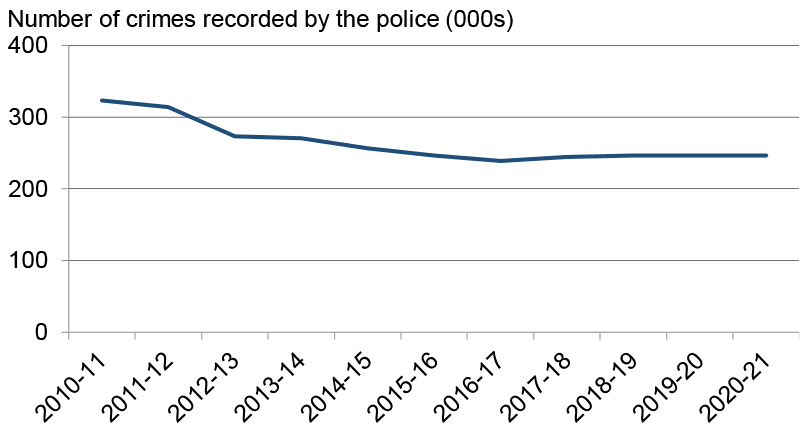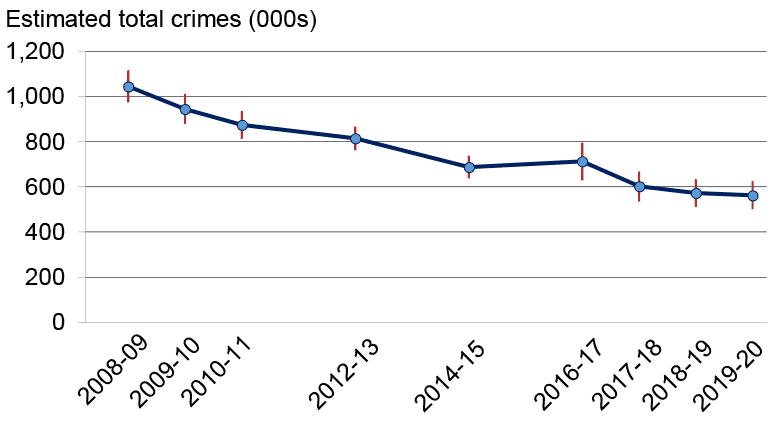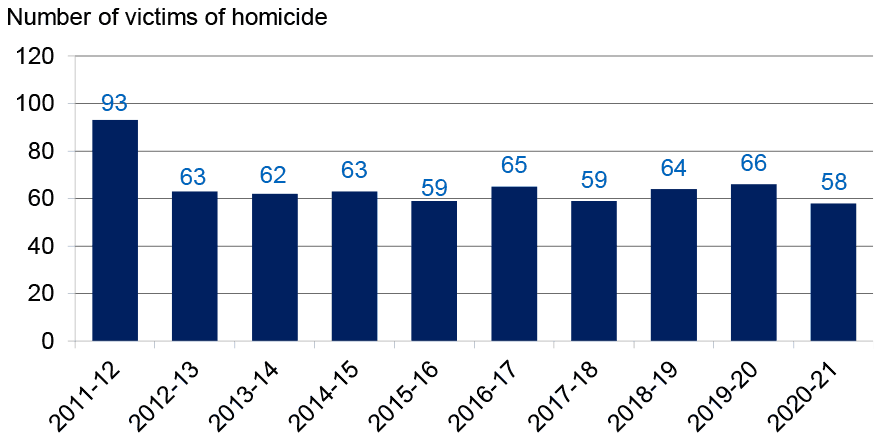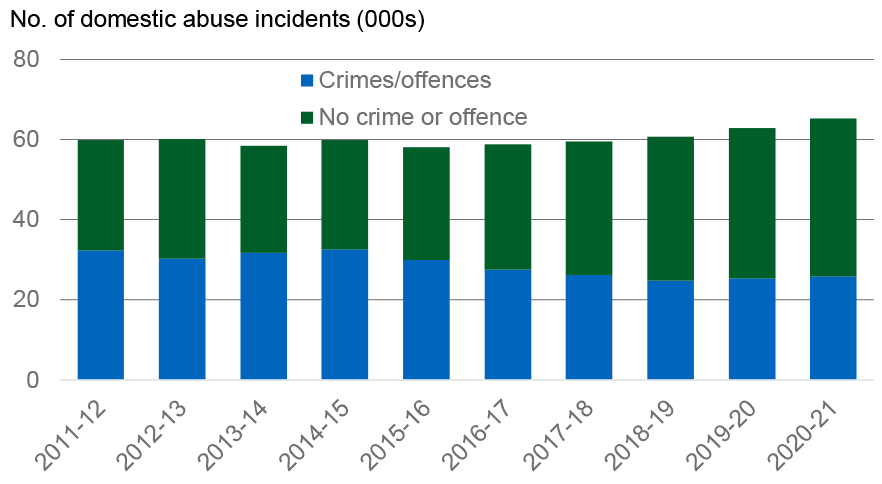Justice Analytical Services - safer communities and justice statistics monthly report: May 2022 edition
This report provides, in a single place, a concise but comprehensive overview of a number of important justice and safer communities statistics. It covers many different topics including crime, policing, community safety, courts and prisons.
This document is part of a collection
Summary statistics on crime in general
Police recorded crime at one of the lowest levels since 1974 and is down 22% since 2011-12. Between 2019-20 and 2020-21, the number of crimes recorded remained almost unchanged. The 2020-21 figure includes 20,976 crimes under Coronavirus legislation (compared to 107 in 2019-20). All other crimes collectively decreased by 8%.

Crime has fallen by 46% since 2008-09. Results from the Scottish Crime and Justice Survey (SCJS) show that around 1 in 8 adults were victims of crime in 2019-20 (11.9%) compared to 1 in 5 in 2008-09 (20.4%). The estimated number of crimes fell by 46% over the same period, and by 21% since 2016-17. The SCJS detected no change in the overall victimisation rate between 2018-19 and 2019-20.

Violent crime has fallen over the long term. Non-sexual crimes of violence recorded by the police fell by 4%, to 8,972 in 2020-21. This decrease is due to the recording of fewer crimes across every category except “other” violence, which rose by 22%. This is due to an increase in online crimes of threats and extortion. Overall, non-sexual crimes of violence remained at a lower level than all years between 1980 and 2011-12. The SCJS showed a 39% fall in violent crime between 2008-09 and 2019-20 and that an estimated 48% of violent crime in 2019-20 was reported to the police.
Sexual crimes fell for a second consecutive year. Sexual assault, and rape & attempted rape, both fell between 2019-20 and 2020-21, while other sexual crimes continued to rise. Overall, sexual crimes remain at one of their highest levels. Multiple factors lie behind the long term increase in recorded sexual crime including a greater willingness of victims to come forward, more historical reporting, more online offending and the impact of new legislation. The SCJS for 2018-20 (2018-19 & 2019-20 combined) estimated that 3.6% of adults experienced at least one serious sexual assault since the age of 16, unchanged from 2008-09.
Women more likely to experience partner abuse. The SCJS, for 2018-20, estimated that 3.2% of respondents had experienced partner abuse in the year prior to interview. A higher proportion of women than men experienced this, at 3.7% and 2.6% respectively.
Increase in crime clear up rate. The clear up rate for all recorded crimes was 56.3% in 2020-21, up from 51.5% in 2019-20. This is the largest increase on record and likely reflects the impact of the Covid-19 pandemic on the volume and types of crime recorded.
No. of victims of homicide at record low. There were 58 homicide victims recorded by the police in Scotland in 2020-21, a 38% decrease from 2011-12 and the lowest value since comparable records began in 1976. Since 2012-13, the number of victims of homicide each year ranged between 58 and 66.

Increase in recorded domestic abuse incidents. There were 65,251 incidents of domestic abuse recorded by the police in 2020-21, an increase of 4% on 2019-20. In 2020-21, 40% of all incidents recorded by the police included the recording of at least one crime or offence.

Contact
Email: Justice_Analysts@gov.scot
There is a problem
Thanks for your feedback